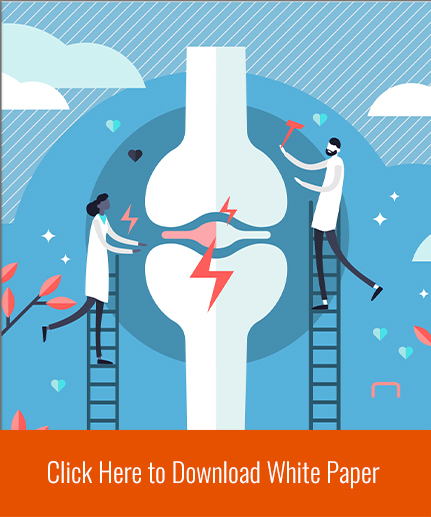Free Case Evaluation

What Causes CRPS?
Determining what causes Complex Regional Pain Syndrome
If you or someone you care about is dealing with Complex Regional Pain Syndrome (CRPS), one of the most frustrating parts is not knowing exactly why it started. CRPS is tricky: lots of things seem to contribute, but no single cause applies to everyone. At CRPS Law Firm, we want you to understand what is known about how CRPS begins, what risk factors make it more likely, and why some people develop it and others don’t.
What do the scientists agree on?
Scientists and doctors generally agree on a few things regarding CRPS. CRPS often begins after some kind of trauma or injury. It involves both the peripheral nervous system (nerves in the arms, legs, etc.) and the central nervous system (spinal cord, brain). Inflammation, immune system changes, and abnormal regulation of blood flow and nerve signals are also important parts of the puzzle.
Here’s what remains uncertain:
- Why do some people develop CRPS after an injury, and others don’t, even when the injuries seem similar?
- The relative contribution of each mechanism (nerve damage, immune response, psychological stress, etc.)
- Whether certain individuals have genetic or biological predispositions that make them more likely to develop CRPS.
Types of triggers for CRPS
The following are known “starts” or risk triggers that can set CRPS in motion.
- Fractures are among the most common triggers. Broken bones, especially when displaced or with complications like tight casting, can injure smaller nerves or disrupt blood flow.
- An incision, scarring, sutures, or sometimes simply the process of surgery can damage nearby nerves, even if the surgery is “routine.”
- Sprains, strains, burns, cuts, or abrasions may seem minor, but they can trigger CRPS, especially if there’s damage to small sensory or autonomic nerves. Even a “minor” injury in the wrong context can lead to abnormal healing.
- Keeping a limb too still (for example, in a tight cast) may increase the risk of CRPS. Without regular sensory input (touch, temperature, or movement), certain nerve fibers may become more vulnerable.
- For CRPS Type II (causalgia), a clear nerve injury is involved. But even in Type I (no identified nerve damage), damage to thin nerve fibers (that transmit temperature, pain, etc.) seems to play a role.
- Conditions that affect nerve health or immune function, like diabetes, peripheral neuropathy, or autoimmune diseases, may increase the risk of CRPS. Smoking and poor circulation are also possibly relevant.
- While CRPS is not “just psychological,” high stress or emotional distress around the time of the injury may worsen or lengthen symptoms. It seems to be a modifier, however, rather than a primary cause.
How does CRPS develop?
When CRPS takes hold, multiple biological systems seem to misfire or respond abnormally. Here are the main mechanisms scientists believe cause CRPS, often several in the same person.
Peripheral nerve injury/small fiber damage
Damage or dysfunction in small, thin nerves that sense pain, temperature, or touch. When these nerves are injured, they can send exaggerated pain signals. Also, these nerves regulate blood vessels and sweat glands; misfiring in them can produce redness, sweating, and temperature changes.
Inflammatory response/immune activation
After injury, the body’s repair systems (immune cells, cytokines) are activated to heal; sometimes this response becomes overactive or persistent. Pro‑inflammatory cytokines are elevated in CRPS patients. These promote swelling, redness, heat, and pain hypersensitivity. Neurogenic inflammation (nerve‑mediated inflammation) adds to the problem.
Autonomic/circulatory dysfunction
The autonomic nervous system controls things like blood flow, skin temperature, and sweating; misregulation causes problems. CRPS often includes abnormal sweating, temperature asymmetry, and color changes. Blood vessels may constrict or dilate abnormally. Circulation may be impaired, which can perpetuate swelling, and tissue damage.
Central sensitization/altered processing in the spinal cord and brain
The central nervous system (spinal cord, brain) gets “trained” to overreact to pain or fails to dampen pain appropriately. Allodynia (pain from normally non‑painful stimuli), hyperalgesia, spread of pain beyond the original injury, and long‑lasting pain even after peripheral healing are all signs of central sensitization.
Genetic and epigenetic factors
Some individuals may be more biologically predisposed to develop CRPS because of their genes or because of gene expression changes. Rare family clusters suggest genetic roles; some associations with immune genes; and individual differences in how well nerves heal. But evidence is still evolving.
Psychological/psychosocial factors
Emotional stress, mood, beliefs, and pain expectations influence how the body responds to injury. Stress can amplify immune response, pain perception, and autonomic tone. Anxiety, depression, and catastrophizing may worsen symptoms and delay recovery.
Who is more likely to get CRPS?
Knowing what causes CRPS also means recognizing what increases the odds; that is, the risk factors. Having risk factors doesn’t mean you will get CRPS; it only raises the probability. Here are some of the known risk factors:
- Gender. CRPS is more common in women than in men.
- Age. Middle age seems more commonly affected; younger people or older people may have different risks. Further, older age may reduce nerve regeneration.
- Severity of the trauma. More severe injuries (like fractures, crush injuries, or surgeries) are more likely to trigger CRPS.
- Upper limb injuries. Injuries in the arms and hands seem to lead to CRPS more often than similar ones in lower limbs, though both are possible.
- Delayed or poor treatment of injury. Tight casts, immobilization, or failure to manage pain well can all contribute to CRPS.
- Preexisting nerve issues or neuropathy. If nerves are already compromised (due to diabetes, previous injury, etc.), the risk of CRPS increases.
- Smoking/poor circulation. These can affect healing and nerve health.
- Autoimmune or inflammatory conditions. People with other inflammatory diseases appear more prone to CRPS.
- Psychological stress. High stress, anxiety, or depression at or around the time of injury may increase the risk.
Special situations and mystery causes
Sometimes, CRPS can appear even when there is no clear trigger. Alternatively, it may develop seemingly out of proportion to what might be expected. Here’s what researchers think about this:
- In a minority of cases, people don’t recall a specific injury happening. It’s possible there was one (microscopic nerve damage, compression, or stretch injury) that went unnoticed. Or, perhaps prolonged immobilization or internal inflammation plays a role.
- Even without a major injury, keeping a limb still for a long time (like in a cast) can cause changes in circulation, nerve sensitivity, and immune activity that resemble early CRPS.
- Stroke or other central nervous system injury sometimes leads to CRPS, likely because the brain’s capacity for integrating signals from the limb has been altered. Metabolic factors (like elevated blood sugar) may also increase the risk.

Why do causes matter for legal claims and treatment?
Understanding what causes CRPS isn’t just academic. It has real consequences for medical care and potential legal cases. Here’s how knowing about causes can help.
- Early intervention: If inflammation and nerve injury are early triggers, getting medical care fast (treating fractures properly, avoiding overly tight casts, managing pain aggressively) may prevent or reduce severity.
- Multidisciplinary treatment: Because there are many mechanisms (nerve, immune, central, autonomic), treatment often has to be multi-pronged: pain specialists, physical therapy, psychology, possibly immune or vascular specialists.
- Evidence in legal cases: If someone’s CRPS followed surgery, trauma, or poor treatment (for example, an improperly fitted cast), that may help show causation or liability. Documentation of risk factors (medical history, severity of injury, treatment delays) and symptom timeline is critical.
How the CRPS Law Firm can help
When we handle CRPS cases, questions about cause come up early:
- Was the injury or surgery done properly (for example, was the cast too tight, was nerve damage properly addressed)?
- Did medical providers recognize signs early enough? Did they treat aggressively (pain control, physical therapy, etc.)?
- Are there documented risk factors (existing medical conditions, nerve problems, past trauma) that might affect how CRPS developed?
- What was the timeline? When did symptoms begin, and how did they evolve?
- Do we have medical records that show inflammatory markers, nerve tests, photographs, temperature or color changes, etc.?
These cause-related questions matter both for medical treatment and for building a legal case when someone’s suffering may be connected to negligence or failure in care.
If you or someone you love is struggling with Complex Regional Pain Syndrome and believes it may have been caused by an injury, surgery, or medical negligence, don’t wait to get the help you deserve. At the CRPS Law Firm, we understand how painful, confusing, and isolating this condition can be, and we’re here to stand by your side. Our team has the knowledge, compassion, and experience to guide you through your legal options and fight for the compensation and care you need. Call or contact us today for a free consultation, and let us help you move forward with confidence.

